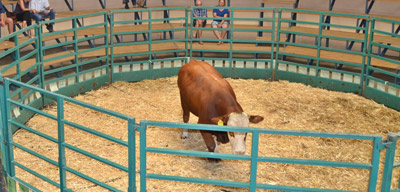
Drought causes unforeseen cost implications for dairy

Namibia Dairies staff optimistically waving to the future.

Delivering fresh milk to the nation: workers stand in front of some of the products that are ready to be shelved.
Milk producers’ margins will come under pressure if input costs rise and cannot be contained due to the scarcity of fodder.
According to Ling, “there are four different farming systems in the dairy industry around the country, each a bit different from the other, thus somehow each will experience the impact on margins differently.”
The four dairy farming systems comprise, Intensive (Hardap irrigation), Intensive Superfarm (Mariental), Semi-intensive and Extensive.
Intensive farming is generally also cost intensive. Sustenance for the dairy herd is provided on a daily basis and the animals are kept in smaller enclosures. For instance, at Namibia Dairies’ !Aimab Superfarm in the Mariental district, which is a mega-sized dairy production facility managed as an intensive farming operation, the daily fodder requirement is more than 120 tons.
“With feed cost being the main input cost at any dairy farm, as much as 75% of total cost is feed, it would be right in saying that any material over-inflation increase on fodder has a significant negative impact on margin to farmers,” he explained.
Said Ling, “the most profitable system is that of extensive farming, with a profit of approximately N$1.85 per litre raw milk, at a feed cost of approximately N$3 per litre.”
Adding more calculations and demonstrating how the drought will have a negative impact on profit margins, Ling said, “If feed costs increase by 20% then the profitability will decrease by N$0,60 per litre or 33%. The intensive farming systems at Mariental, for example, make a profit of approximately N$0.60 per litre raw milk at a feed cost of approximately N$3.3 per litre.” “If feed costs increase by 20 % or N$0,66 per litre then this farmer will make an overall loss. The situation at the Superfarm is similar to the intensive systems at Mariental,” he added.
He acknowledged that the drought and the inability of producers to pass on price increases to compensate for cost of production increases, will put financial stress into the industry if it continues indefinitely.
Ling also highlighted that milk production is seasonal and at the moment due to the unfavourable conditions, production is at its lowest point with the Superfarm currently producing only 40,000 litres per day whereas the output is supposed to reach about 45,000 litres per day under normal conditions.










































